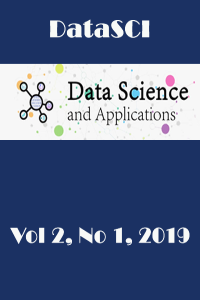Öz
Kaynakça
- [1] Carree, M., Van Stel, A., Thurik, R., & Wennekers, S. (2002). Economic development and business ownership: an analysis using data of 23 OECD countries in the period 1976–1996. Small business economics, 19(3), 271-290.
- [2] Maddison, A. (1983). A comparison of levels of GDP per capita in developed and developing countries, 1700–1980. The Journal of Economic History, 43(1), 27-41.
- [3] Taş, Ç. K., & Özel, S. Ö. (2017). Faktör analizi yöntemi ile Türkiye ve Avrupa Birliği Üyesi Ülkelerin sosyo-ekonomik göstergeler bakımından gelişmişlik düzeylerinin karşılaştırılması. Journal of the Cukurova University Institute of Social Sciences, 26(3), 60.
- [4] Saint-Arnaud, S., & Bernard, P. (2003). Convergence or resilience? A hierarchical cluster analysis of the welfare regimes in advanced countries. Current Sociology, 51(5), 499-527.
- [5] Hulten, C. R., & Isaksson, A. (2007). Why development levels differ: The sources of differential economic growth in a panel of high and low-income countries (No. w13469). National Bureau of Economic Research.
- [6] Noorbakhsh, F., Paloni, A., & Youssef, A. (2001). Human capital and FDI inflows to developing countries: New empirical evidence. World development, 29(9), 1593-1610.
- [7] Goldberg, L. S., & Klein, M. W. (1997). Foreign Direct Investment, Trade and Real Exchange Rate Linkages in Developing Countries (No. w6344). National Bureau of Economic Research.
- [8] Williamson, J. B., & Boehmer, U. (1997). Female life expectancy, gender stratification, health status, and level of economic development: A cross-national study of less developed countries. Social Science & Medicine, 45(2), 305-317.
- [9] Grzebyk, M., & Stec, M. (2015). Sustainable development in EU countries: concept and ratingof levels of development. Sustainable Development, 23(2), 110-123.
- [10] Demirhan, H., & Renwick, Z. (2018). Missing value imputation for short to mid-term horizontal solar irradiance data. Applied Energy, 225, 998-1012.
- [11] Alpar, R. (2011). Çok Değişkenli İstatistiksel Yöntemler, Ankara: Detay Yayıncılık.
- [12] Dalatu, P. I., Fitrianto, A., & Mustapha, A. (2017). Hybrid distance functions for K-Means clustering algorithms. Statistical Journal of the IAOS, 33(4), 989-996.
- [13] Wang, Q., Wang, Y., Niu, R., & Peng, L. (2017). Integration of Information Theory, K-Means Cluster Analysis and the Logistic Regression Model for Landslide Susceptibility Mapping in the Three Gorges Area, China. Remote Sensing, 9(9), 938.
Öz
In the globalizing world, there are many variables that affect the development levels and economies of countries. A comprehensive analysis of these variables is crucial for the future of countries In this sense, countries are classified as underdeveloped countries, transition countries, developing countries, and developed countries etc. It is an undeniable fact that the countries classified in this way and in the same class have similar characteristics. In this study, it is aimed to reveal the economic changes of Balkan and former Soviet Union countries over the last 20 years with clustering of these countries by using the factors that affect levels of development. First, socio-economic variables which are considered to affect levels of development were taken according to years, missing data imputation methods were used for identification of missing values of the variables. Later, variables which affect levels of development are determined and with the help of these variables, similar countries are separated into clusters with cluster analysis. Same procedures are made for 1995 and 2015 years, changes of countries over the years are shown.
Anahtar Kelimeler
balkan countries clustering analysis data analysis developing countries missing value
Kaynakça
- [1] Carree, M., Van Stel, A., Thurik, R., & Wennekers, S. (2002). Economic development and business ownership: an analysis using data of 23 OECD countries in the period 1976–1996. Small business economics, 19(3), 271-290.
- [2] Maddison, A. (1983). A comparison of levels of GDP per capita in developed and developing countries, 1700–1980. The Journal of Economic History, 43(1), 27-41.
- [3] Taş, Ç. K., & Özel, S. Ö. (2017). Faktör analizi yöntemi ile Türkiye ve Avrupa Birliği Üyesi Ülkelerin sosyo-ekonomik göstergeler bakımından gelişmişlik düzeylerinin karşılaştırılması. Journal of the Cukurova University Institute of Social Sciences, 26(3), 60.
- [4] Saint-Arnaud, S., & Bernard, P. (2003). Convergence or resilience? A hierarchical cluster analysis of the welfare regimes in advanced countries. Current Sociology, 51(5), 499-527.
- [5] Hulten, C. R., & Isaksson, A. (2007). Why development levels differ: The sources of differential economic growth in a panel of high and low-income countries (No. w13469). National Bureau of Economic Research.
- [6] Noorbakhsh, F., Paloni, A., & Youssef, A. (2001). Human capital and FDI inflows to developing countries: New empirical evidence. World development, 29(9), 1593-1610.
- [7] Goldberg, L. S., & Klein, M. W. (1997). Foreign Direct Investment, Trade and Real Exchange Rate Linkages in Developing Countries (No. w6344). National Bureau of Economic Research.
- [8] Williamson, J. B., & Boehmer, U. (1997). Female life expectancy, gender stratification, health status, and level of economic development: A cross-national study of less developed countries. Social Science & Medicine, 45(2), 305-317.
- [9] Grzebyk, M., & Stec, M. (2015). Sustainable development in EU countries: concept and ratingof levels of development. Sustainable Development, 23(2), 110-123.
- [10] Demirhan, H., & Renwick, Z. (2018). Missing value imputation for short to mid-term horizontal solar irradiance data. Applied Energy, 225, 998-1012.
- [11] Alpar, R. (2011). Çok Değişkenli İstatistiksel Yöntemler, Ankara: Detay Yayıncılık.
- [12] Dalatu, P. I., Fitrianto, A., & Mustapha, A. (2017). Hybrid distance functions for K-Means clustering algorithms. Statistical Journal of the IAOS, 33(4), 989-996.
- [13] Wang, Q., Wang, Y., Niu, R., & Peng, L. (2017). Integration of Information Theory, K-Means Cluster Analysis and the Logistic Regression Model for Landslide Susceptibility Mapping in the Three Gorges Area, China. Remote Sensing, 9(9), 938.
Ayrıntılar
| Birincil Dil | İngilizce |
|---|---|
| Konular | Yapay Yaşam ve Karmaşık Uyarlanabilir Sistemler |
| Bölüm | Research Article |
| Yazarlar | |
| Yayımlanma Tarihi | 15 Temmuz 2019 |
| Yayımlandığı Sayı | Yıl 2019 Cilt: 2 Sayı: 1 |
AI Research and Application Center, Sakarya University of Applied Sciences, Sakarya, Türkiye.


